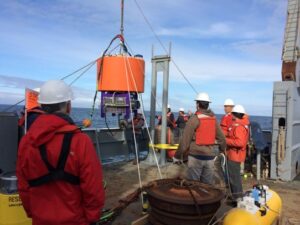 This past summer, scientists tracking domoic acid made upgrades to the equipment they use to measure the neurotoxin. These upgrades help scientists track domoic acid more closely by increasing the capacity to process samples by 50 percent. This allows the team to more closely and accurately track the development of a toxic Pseudo-nitzschia bloom.
This past summer, scientists tracking domoic acid made upgrades to the equipment they use to measure the neurotoxin. These upgrades help scientists track domoic acid more closely by increasing the capacity to process samples by 50 percent. This allows the team to more closely and accurately track the development of a toxic Pseudo-nitzschia bloom.
This project is co-led by the University of Washington and NOAA’s Northwest Fisheries Science Center, along with partners at the Monterey Bay Aquarium Research Institute, Olympic Coast National Marine Sanctuary, National Centers for Coastal Ocean Science, Quileute Tribe, and @McLane Research Laboratories. It is funded by the NCCOS Monitoring and Event Response for Harmful Algal Blooms (MERHAB) Research Program. Learn more about this five year project.
https://coastalscience.noaa.gov/news/real-time-obs-improve-domoic-acid-forecasts/
 Official websites use .gov
A .gov website belongs to an official government organization in the United States.
Official websites use .gov
A .gov website belongs to an official government organization in the United States. Secure .gov websites use HTTPS
A lock or https:// means you’ve safely connected to the .gov website. Share sensitive information only on official, secure websites.
Secure .gov websites use HTTPS
A lock or https:// means you’ve safely connected to the .gov website. Share sensitive information only on official, secure websites.